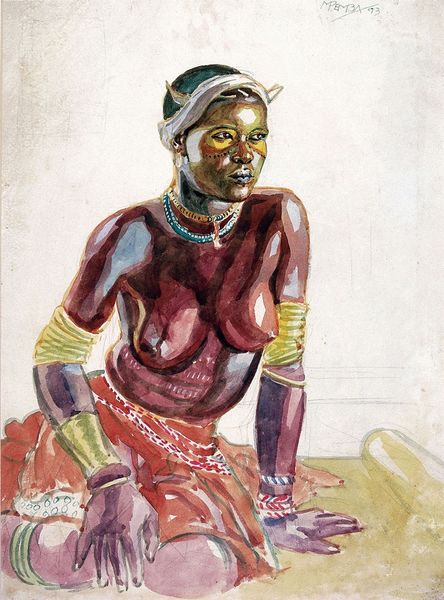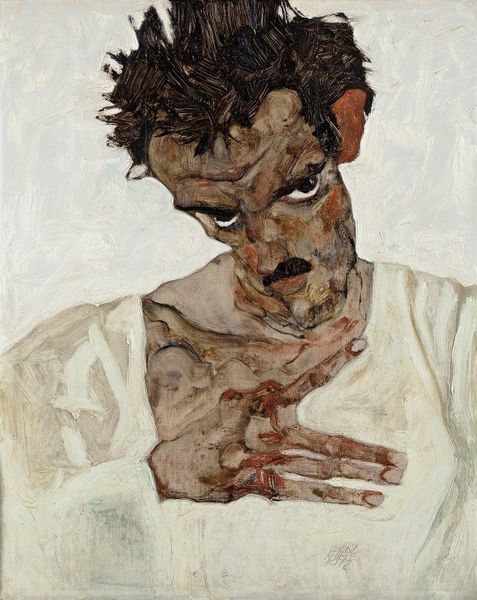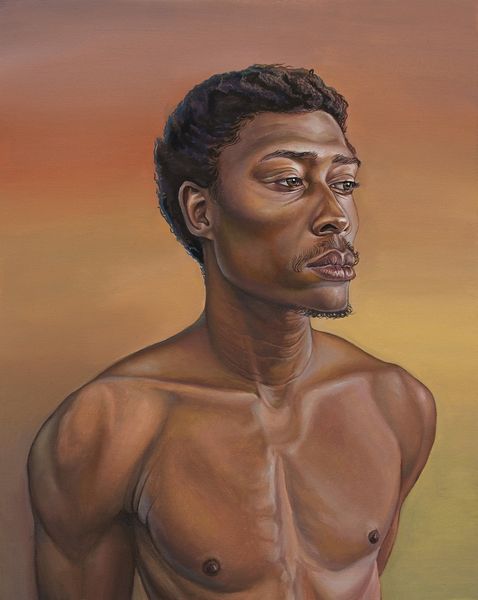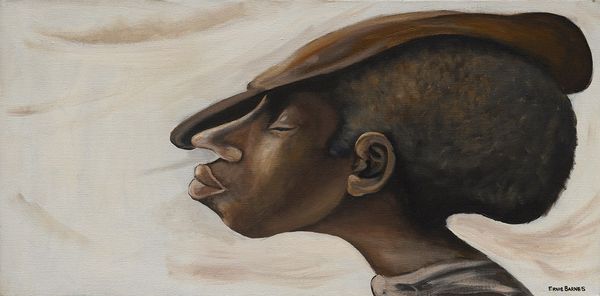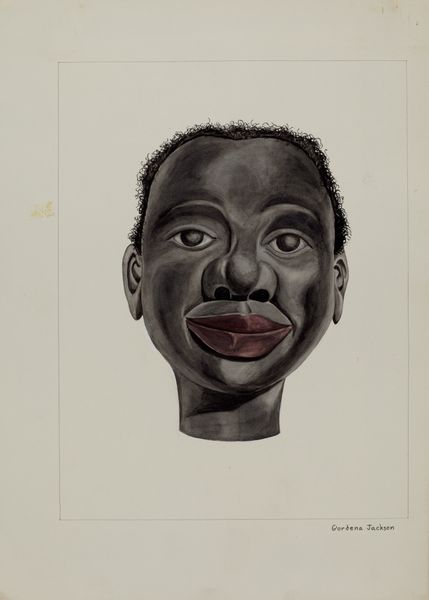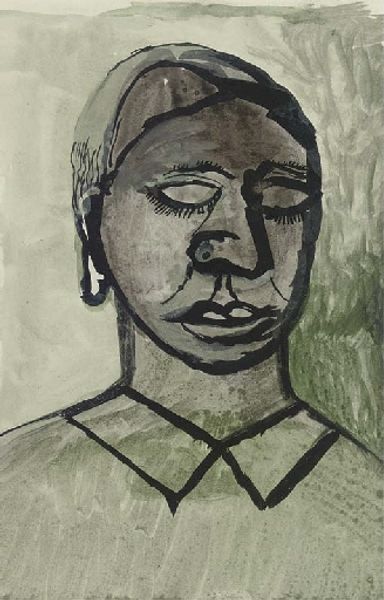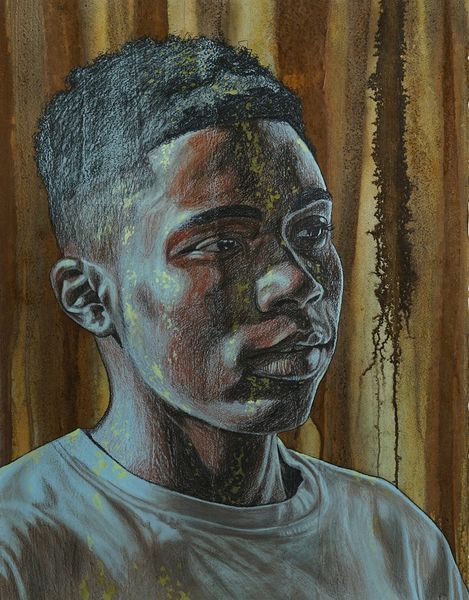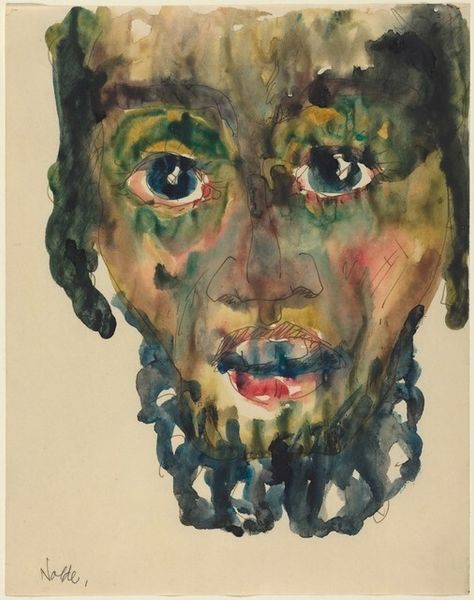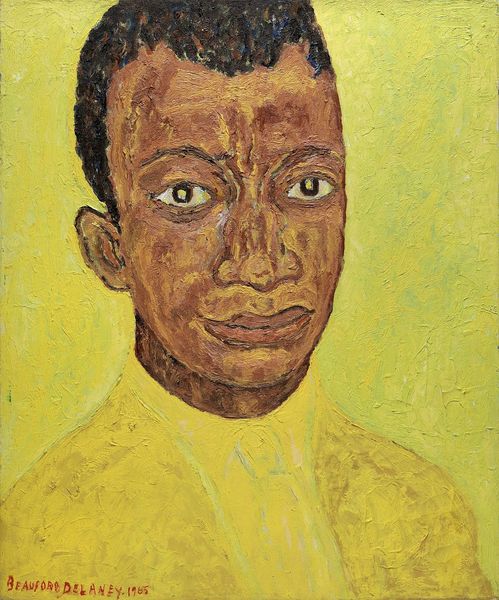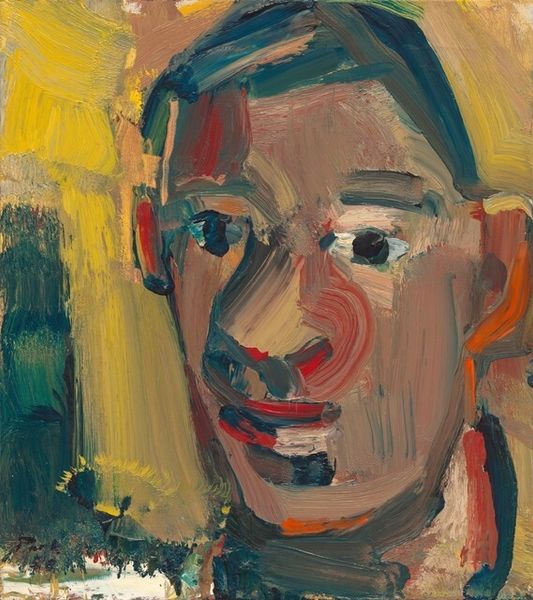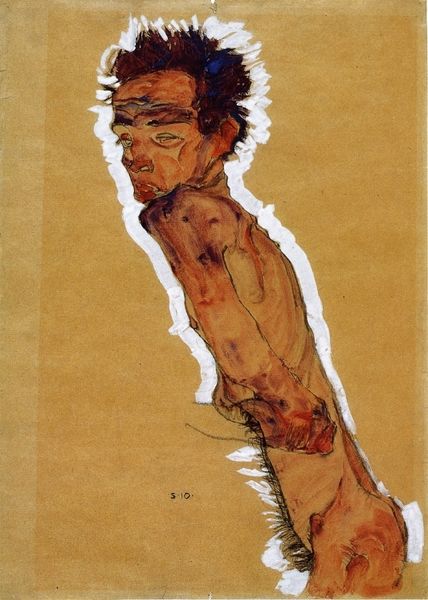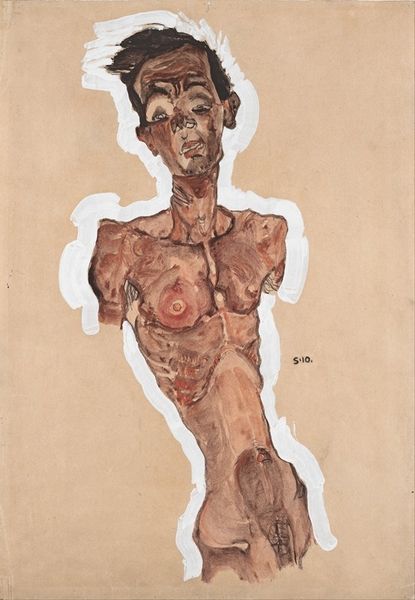
watercolor
#
portrait
#
facial expression drawing
#
figuration
#
watercolor
#
portrait reference
#
portrait head and shoulder
#
human
#
animal drawing portrait
#
portrait drawing
#
facial study
#
facial portrait
#
portrait art
#
fine art portrait
#
realism
#
digital portrait
Copyright: George Pemba,Fair Use
Editor: We're looking at George Pemba's "Adam," a watercolor painting from 1941. The washes of color are really interesting, how they create form. What strikes me is the angle of his gaze, and how it contrasts with the intimate positioning of his hands. What do you see in this piece? Curator: I observe that the formal qualities of this portrait serve to isolate the figure. Note the strategic use of chiaroscuro: how Pemba contrasts darker and lighter shades not merely to depict form, but to direct the viewer's attention. The diagonal composition further amplifies the subject's gaze towards something beyond the frame. Are we looking at realism or idealism here? Editor: Good question. I hadn't thought about the diagonal lines so directly. The fact that it's a watercolor gives the piece a sense of immediacy, yet the subject also seems contemplative. Do you think the limited palette informs this duality? Curator: Undoubtedly. Pemba’s strategic application of browns and reds builds contrast through monochromatic variety, reinforcing both emotional depth and implied form. We see modeling but also the inherent flatness of the picture plane, a dynamic tension in pictorial space. Editor: This interplay you’re highlighting really enriches how I understand it. Thank you. Curator: My pleasure. Consider, next time, how these formal choices might direct your consideration of context and meaning.
Comments
No comments
Be the first to comment and join the conversation on the ultimate creative platform.

